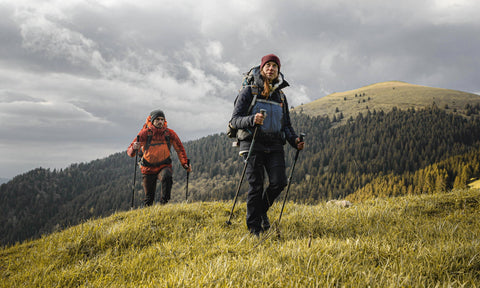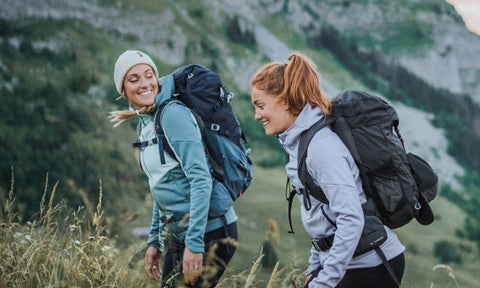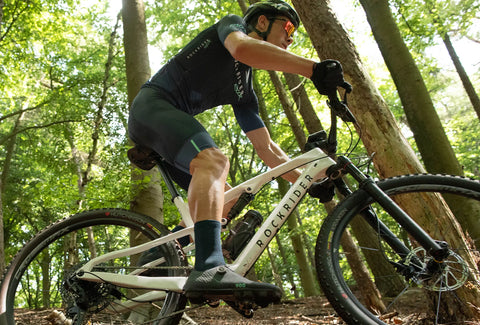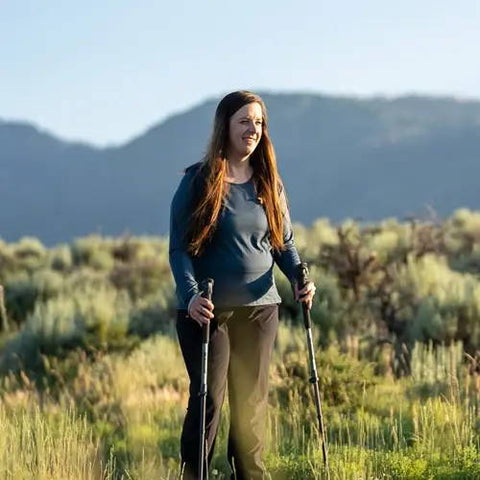1st Layer: Breathable
The choice of a good first layer is neglected all too often but is, however, essential. This layer helps you stay dry and wicks moisture away from your skin to the outer layers. So it's best to choose a quick-drying, breathable fabric (with so-called "hydrophobic" fibers).
2nd Layer: Insulating
To keep you warm, you must have a second layer that insulates you from the cold. This is the function of sweaters, fleeces, and also down jackets. Make sure you manage your layers of clothing properly, particularly the 2nd layer, depending on your exercise intensity. For example, if you can't be bothered to take off your fleece when climbing uphill, you will sweat more and become damp even if you're wearing a breathable first layer. You can also choose clothing with ventilation zips (neck or underarm vents) to help regulate your body temperature.
3rd Layer: Protection
Finally, remember to take a third windproof or waterproof layer to protect you from external elements--and a pair of appropriate durable shoes to go with it. We're thinking mainly about climatic elements such as wind and rain. But you also need to consider potentially harmful natural elements, particularly if you like to wander off the beaten track, such as scratches caused by thorns or bushes.
During a hike, you tend to alternate between sustained climbing efforts and less strenuous moments. Today, advances in materials technology has led to the development of clothing capable of performing multiple functions: a convertible jacket for example which can perform with the same function as a combined second and third layer or a high-tech T-shirt which is both breathable and insulating. So, an item of clothing used as a 2nd layer in winter can be used as a combined 1st and 2nd layer in summer. This means you can put together the most suitable outfit not only in terms of warmth but also compact design. You can wear layers in winter that are still good for summer, meaning they're perfect year-round!
Oh, and also!
Don't forget suitable protection for your legs and feet; convertible pants or shorts in summer and waterproof pants in winter with or without tights, plus warm, breathable socks. If it's very cold or if you get cold more easily, remember to take gloves and a hat.
To keep your hands and feet warmer, wear a hat! In fact, 80% of the body's heat escapes from our extremities and our circulatory system prioritizes the supply of blood to the brain. If your head is covered, then it requires less energy to keep the brain warm, and there is improved blood flow to the rest of the body, particularly the extremities.











